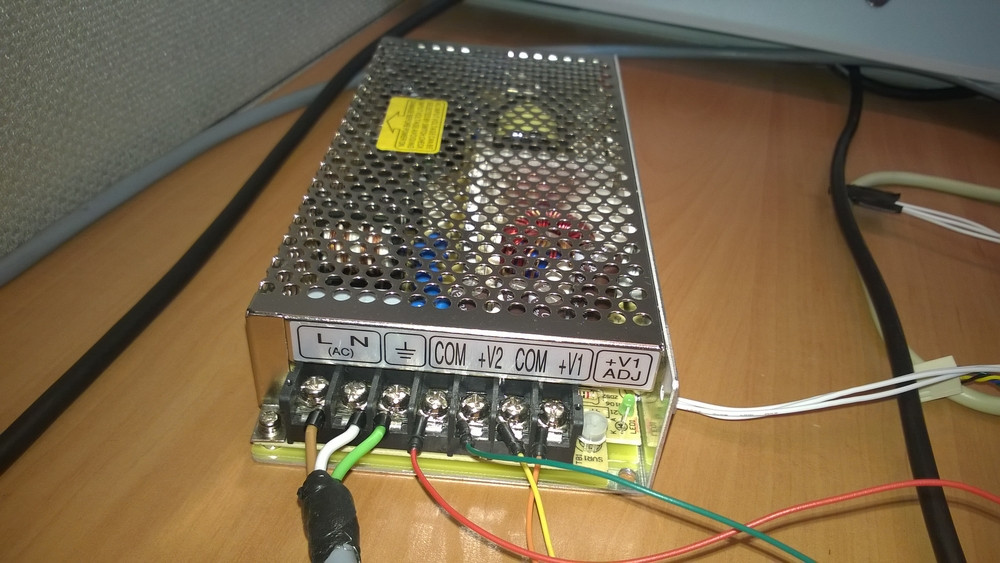Easy peasy. The power supply will have screw connections for 115 AC in and + - 15V DC out.
Here is a pic I found on the web. It is typical of the connectors found on almost all made in China power supplies.

Do not do any wiring with a cord plugged into a wall socket!!!
The 'L' stands for line and is where you connect the
black wire of an AC power cord. The black wire is the narrow blade on the plug.
The 'N' stands for neutral and is where you connect the
white wire of an AC power cord. The white wire is the wide blade on the plug.
The ground symbol is where you connect the
green wire of an AC power cord. The green wire is the round 3rd pin on the plug.
Each of the above are high voltage house current. Cover the connections so they can never be accidentally touched or shorted together. The shock will knock your butt across the room. Use a 3 prong AC plug. Do not use a 2 prong AC plug.
The 'COM' stands for common. It is often referred to as DC ground or zero DC volts (not to be confused with the ground symbol on the 115V input). COM is the same as the
black wire of a PWR56.
The +V terminals are the 15 volt positive output. +V is the same as the
red wire of a PWR56.
The two COMs are tied together inside the enclosure. +V1 and +V2 are tied together inside the enclosure. It doesn't matter which you pick. They are the same. Two connections for output are provided for convenience since these power supplies are often used to power more than one device.